Crimp Covers: What are they? How do you use them?
If you enjoy stringing beads, you probably already use crimps. But do you also use crimp covers? Did you even know these things existed? Well, they do, and they’re there to give your jewellery a more professional finish. So, let’s take a look at what that means.
What are crimp covers?
These are rounded pieces of metal, with a groove in them. I’ve shown you a detailed photo below.
The idea is that you slip these over a crimp bead, then use pliers to close the edges of the metal. What you end up with is a neat cover over the top of your crimp. This can actually look like just another bead. So, it’s a great way to get a professional-looking, neat finish for your work.
If you’ve ever used a crimp bead, you’ll know that they don’t always close shut in the neatest possible manner. So, by covering them, you don’t have to worry.
The cover will also help to protect your crimp bead from wear and tear, hopefully making your jewellery last longer.
How do you use them?
Happily, crimp covers are very easy to use. But, like other small findings, they can feel a little tricky at first. They’re not expensive, so it may be worth trying a few on samples to get used to using them, before you add them to your best jewelry project.
So, when you have completed your stringing, and sealed the crimps to hold everything in place, it’s time to bring out your covers. These provide the perfect finishing touch.
Basically, I find it easiest to lay the back of the cover on my finger. Then, place the crimp inside, supporting it in place. Carefully take your pliers – I prefer to use flat-nosed – and position them around the sides of your cover.
Gently squeeze the pliers, squashing the edges of your cover towards one another. Keep pushing until the edges meet and your cover is completely closed. I’ve shown this process, but of course, I haven’t shown you on an actual sample in the photos, so you will need to imagine your closed crimp with its beads and clasp either side of it.
This may not feel too bad on a lone sample. But it will get a little trickier on an actual piece of jewellery. You will have other beads and clasp near the crimp, so that can leave you less room to get access with your pliers. In this instance, you might want to try pliers with a narrower jaw. Just be careful – you don’t want to break or scratch any of the neighbouring beads and components.
As with anything, this is a skill that just takes a little time and practice to master.
Where do you buy crimp covers?
Most good bead shops will sell all the findings you need for any project. So, check out your local bead store. If you’re happy shopping online, then I can recommend this supplier.
You will find you have a choice of sizes for your crimp covers. So, you should size the cover according to the crimp, naturally. But you can also use a larger cover if you are working on a project with larger beads. Remember how I said the cover would look like ‘just another bead’? Well, you might like to make it part of your design. So, in that case, choose the best size to work with your other beads.
What next?
You might also like to check out the ‘techniques’ section on here. In the ‘making jewellery’ section, you will find more tutorials, including one where I’ve demonstrated how to string beads and use crimps and crimp covers.
If you found this useful, then make sure you’re signed up to the mailing list. I send out an email every month full of beading and jewelry-making tips and advice. So, you won’t miss a thing! You also get a free gift when you join. Sound good? Then click here to sign up now.


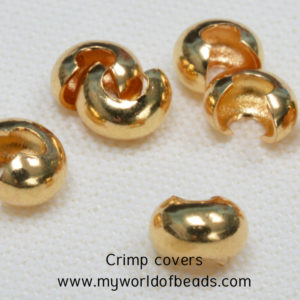
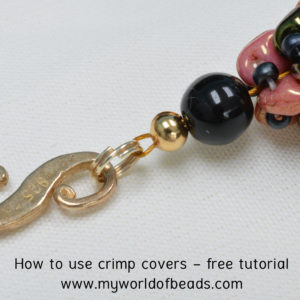
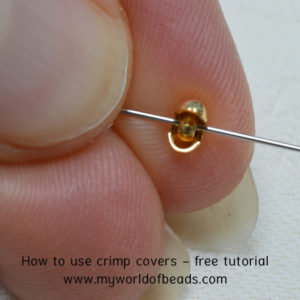
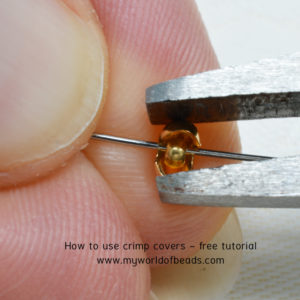



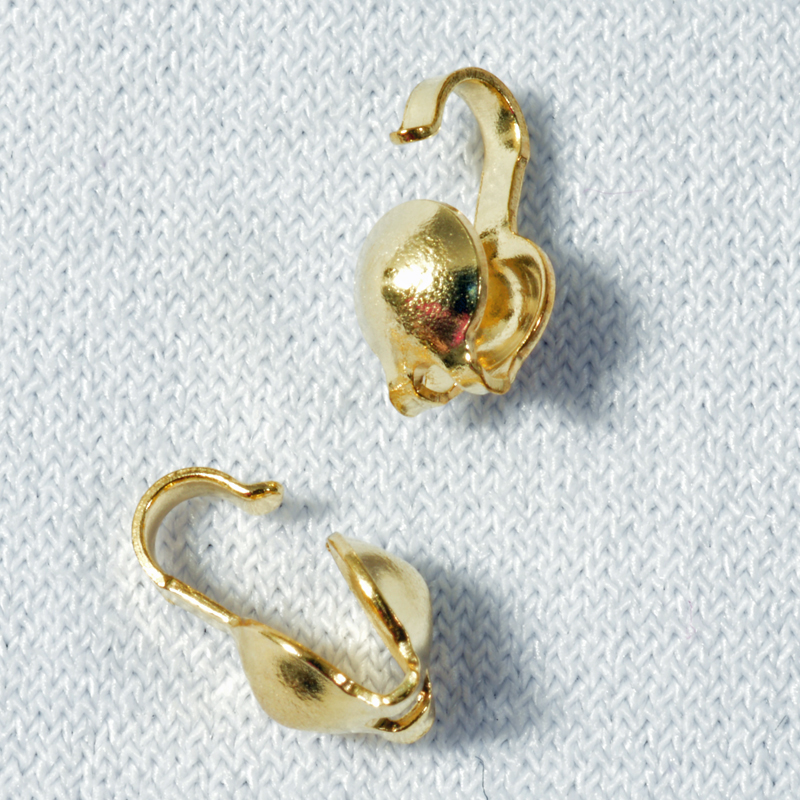






Hello, I am interested in taking your class.
It will be a few weeks before I can start. I am in the middle of things right now.
My # 813 507 9229
Thank you Nancy
Just pop over to https://my-world-of-beads.teachable.com and sign up on any of my classes whenever you want. They are available to you to work in your own time at your own pace. So, I look forward to welcoming you onto any of them whenever you are ready. Thank you for your interest Nancy!